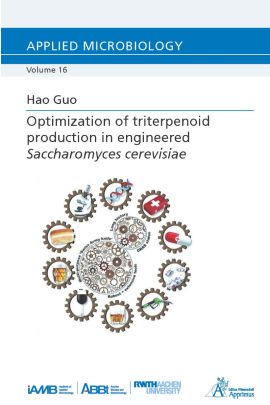In the present thesis, a possible block in the sterol pathway to facilitate 2,3-oxidosqualene accumulation was investigated. Several truncated versions of a previous ERG7 modification were tested for triterpenoid synthesis in a strain that was modified for increased flux through the mevalonate pathway. The sterol synthesis was also investigated to evaluate the selectivity between triterpenoid and sterol synthesis in these strains. The minimal ERG7 modification reducing considerable sterol synthesis while improving triterpenoid synthesis was used as the central mutation for the construction of a triterpenoid chassis based on S. cerevisiae CEN.PK 102-5B. Combined with almost classic mutations like the tHMG1 to foster flux into the mevalonate pathway and reported, but not in the here presented combinations employed modifications (like PAH1), a novel triterpenoid chassis could be constructed and characterized. Finally, the impact of the minimal ERG7 modification on triterpenoids production was investigated by introducing three different 2,3-oxidosqualene based triterpenoid synthesis pathways, namely protopanaxadiol, betulinic acid, and oleanolic acid pathways.
For the triterpenoids of the oleanane-type, we observed an around 8-fold increase compared with the best results published so far, and the dammarane-type triterpenoids titers were increased by 14-fold, compared with the reference strain without blockage of the sterol biosynthesis pathway.
Besides metabolic engineering, medium optimization was previously shown to improve triterpenoid synthesis. In this work, it could be shown that the increased yield of triterpenoids is partly due to the addition of glutamate and that a similar effect can be achieved by the addition of succinic acid to the mineral medium.
In summary, the chassis combined with the mineral medium provides a complete solution for high-level production of diverse triterpenoids, overcoming the main hurdles of translation of these potent natural products into industry, availability and high price.
| Autor | Guo, Hao |
|---|---|
| Gewicht | 0.184 kg |
| Erscheinungsdatum | 09.08.2022 |
Dissertationen
Optimization of triterpenoid production in engineered Saccharomyces cerevisiae
Kurzbeschreibung
In the present thesis, a possible block in the sterol pathway to facilitate 2,3-oxidosqualene accumulation was investigated. Several truncated versions of a previous ERG7 modification were tested for triterpenoid synthesis in a strain that was modified for increased flux through the mevalonate pathway.
In summary, the chassis combined with the mineral medium provides a complete solution for high-level production of diverse triterpenoids, overcoming the main hurdles of translation of these potent natural products into industry, availability and high price.

